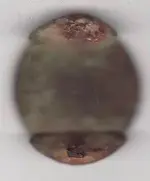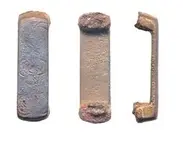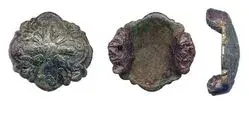BuckleBoy
Platinum Member
- Joined
- Jun 12, 2006
- Messages
- 18,132
- Reaction score
- 9,701
- Golden Thread
- 4
- Location
- Moonlight and Magnolias
- 🥇 Banner finds
- 4
- 🏆 Honorable Mentions:
- 2
- Detector(s) used
- Fisher F75, Whites DualField PI, Fisher 1266-X and Tesoro Silver uMax
- Primary Interest:
- All Treasure Hunting
Hello All,
I found two of these items--flat brass items with two holes for rivets/nails in them. They looked at the time like they would have some sort of stamping on them, but both are plain... The older one has some design and it is cast. It also has a part of an old nail still in one hole of it...
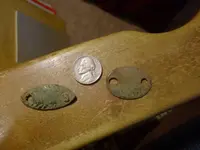
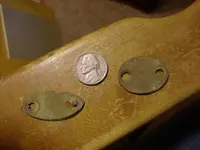
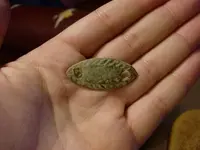
I found this one online that was stamped "CS" from a CW camp--the finder at the site says that it's a "watch fob" but it obviously isn't...and it's the same dimensions as the plain oval one I found (pictured above). I'm not suggesting that these are war related, but I'm just wondering what the heck they are...
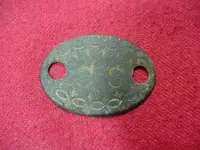
http://www.midtenrelics.com/buttons.htm (See #2, second photo...)
Regards,
Buckleboy
I found two of these items--flat brass items with two holes for rivets/nails in them. They looked at the time like they would have some sort of stamping on them, but both are plain... The older one has some design and it is cast. It also has a part of an old nail still in one hole of it...



I found this one online that was stamped "CS" from a CW camp--the finder at the site says that it's a "watch fob" but it obviously isn't...and it's the same dimensions as the plain oval one I found (pictured above). I'm not suggesting that these are war related, but I'm just wondering what the heck they are...

http://www.midtenrelics.com/buttons.htm (See #2, second photo...)
Regards,
Buckleboy



 ) At any rate, one of the other posters pictured the same "u"s already, we have seen them attached already, and we know for sure they go on the front (engraved side) of the fitting. They come in various shapes: some are pretty basic u shape,, others are wider with a rounded front, etc. and they have already been pictured in previous posts. They are all exactly the same though when it comes to their spacing and how they are fitted (which I will explain)
) At any rate, one of the other posters pictured the same "u"s already, we have seen them attached already, and we know for sure they go on the front (engraved side) of the fitting. They come in various shapes: some are pretty basic u shape,, others are wider with a rounded front, etc. and they have already been pictured in previous posts. They are all exactly the same though when it comes to their spacing and how they are fitted (which I will explain) 
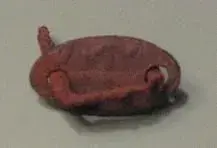
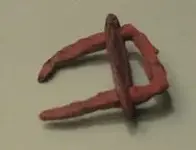
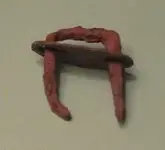
 I will be going through my buckets as well to see if I have anything similar
I will be going through my buckets as well to see if I have anything similar  so are you saying you think they arn't horse related then
so are you saying you think they arn't horse related then 
 what about you
what about you  ?
?
